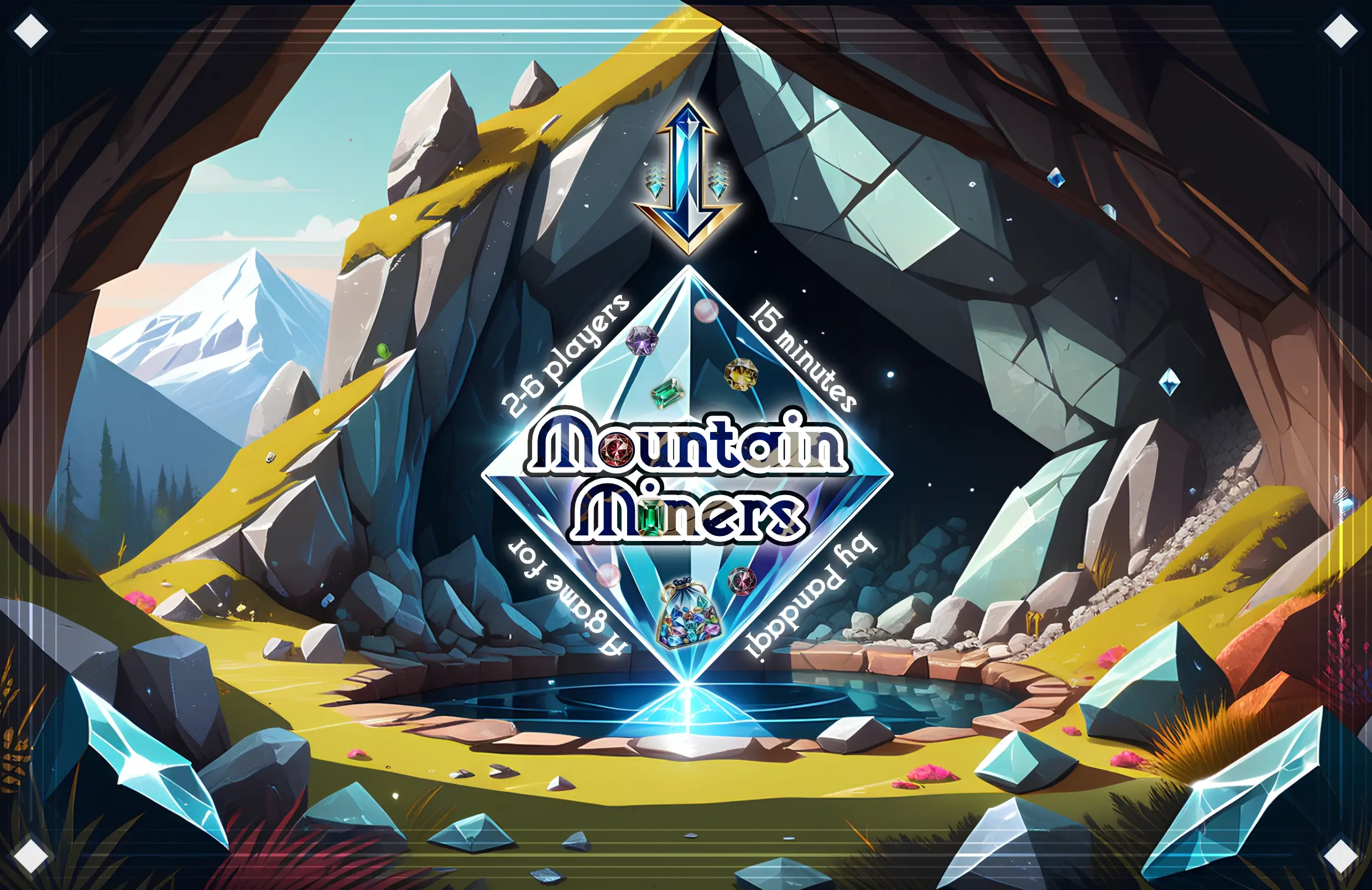Create a 6x6 grid of random map tiles, but rotated so that it’s a diamond shape.
Place the arrow tile above any corner (pointing at it). Pick any start player.

The game ends when no gemstones remain ( = the only tiles that score points). Sum the values of all tiles you scored. Highest score wins!
Begin with the start player, then take clockwise turns until done.
On your turn,
- If possible, grab an available tile at the top of the mountain.
- Then move the arrow tile a quarter turn clockwise.
You may also discard an action tile (of yours) to execute its action. You may do this both before and after your turn.
What is the top of the mountain? It’s the layer of tiles closest to the arrow tile. You can only grab from those options, not any tiles on layers further away.

Tiles have two possible types: a gemstone (unique color + scores points) or an action tile.
At the end of the game,
- If you have a gemstone the most out of all players, add the point value of each tile (of that type) to your score.
- If you have a gemstone the least out of all players, subtract the point value of each tile (of that type) from your score.
Ties (for first or last place) are allowed. Action tiles score nothing.
To make this easy to see, keep your collected gemstones in piles sorted by icon.
Action tiles can move the arrow tile to diagonals. This is allowed and follows all the same rules; see the example.

Once you’re familiar with the base game, try some of these variants or expansions! The more you add, however, the more it’s recommended to increase the map size (and play a longer game).
To give the game a quicker start, you can give each player 1 random tile before the game starts.
- It’s recommended to restrict this to action tiles. But you can pick it at random.
- Optional: make this start tile a secret one that you keep in your hand.
- Optional: the start player can choose where the arrow starts, but does NOT get this 1 starting tile.
To make the game harder, only allow one action at most per turn. (That is, you may discard an action tile before or after grabbing a tile, but not both.)
You can also vary the size and shape of the map. It’s recommended to use a diamond shape of at least 5x5 tiles, but anything goes.
Start the game with all the tiles turned facedown.
At the end of each turn, when you move the arrow, you must also gather information (if possible).
- If you haven’t used an action this turn, secretly look at a facedown tile.
- Otherwise, turn one facedown tile faceup.
It also adds new actions and gemstones.
A second Arrow simply means you have more options to choose from when picking your tile. Both of them move automatically at the end of each turn.
Tiles can now be divided into multiple sections.
When you grab such a tile, you only get the side that currently points towards the Arrow Tile. Place tiles before you such that this side faces away from you, to always remember. (You only get that gemstone or action, not the others on the tile.)
In some situations, the Arrow Tile may point at the line between two sides. In that case, choose which of the two options you want upon grabbing the tile.
It also adds new actions and one new gemstone.
This expansion merely adds a few more (chaotic, powerful, spicy) actions. See the table below.
